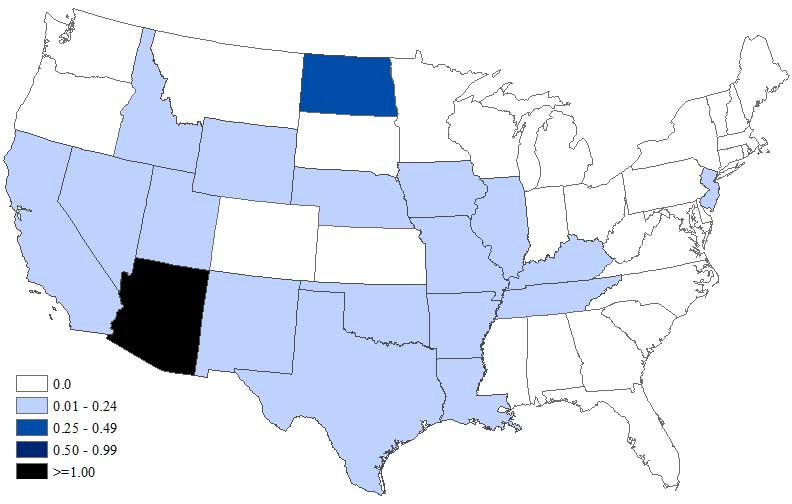
Teenage girl in Menifee dies after four-year battle with West Nile illness
Download story podcast
10:00 PM PST on Wednesday, December 10, 2008
By TAMMY J. McCOY
The Press-Enterprise
A 17-year-old Menifee girl stricken with West Nile Encephalitis died Wednesday, more than four years after she fell ill.
Lauren Ashley Miller contracted West Nile virus in 2004, at age 13, after mosquito bites showed up on her legs. She later developed encephalitis and her brain swelled, leaving her in a mostly vegetative state.
"She was great. Bubbly, lots of energy," recalled Pam Dennison, Lauren's elementary school teacher. "To think that she was a healthy, happy teenager and by the next weekend, she was bedridden ... It happened so quickly."
2007 / The Press-Enterprise
Lauren Ashley Miller, of Menifee, shown with her mother, Bonnie Miller, contracted West Nile virus at age 13 and later developed encephalitis, which led to her death Wednesday.
Dennison noted that of the people who get West Nile, only 1 in 100 develops encephalitis.
"They fought a very valiant fight," said Betti Cadmus, spokeswoman for the Menifee Union School District.
Dennison visited Lauren and her family, and helped organize fundraisers for the family to take her to China for treatments.
The Millers took Lauren to China when she was 15 for umbilical cord blood stem-cell injections. After the treatments, Lauren's mother, Bonnie Miller, wrote that Lauren's ability to swallow had improved, allowing her to eat pureed foods, according to her online journal.
"They are people with great faith," Dennison said of Lauren's parents. "Her parents have done everything."
In 2006 and 2007, the family took Lauren to Kansas City, Mo., for hyperbaric treatments.
Dennison said she saw Lauren in the hospital the day after Thanksgiving.
"They were at the turning point then," she said.
The family learned Lauren was having problems with her kidneys and decided to bring her home, Dennison said.
"There are people who questioned if Lauren knew what was going on around her," Dennison said. "She wasn't able to respond, but there were lots of signs that she knew what was going on."
Lauren flashed a unique smile to a cute doctor in China and locked eyes with her grandfather when he sat next to her, she said.
"I think she knew."
Dennison said she talked to Bonnie Miller on Wednesday and offered to help in any way she could.
Miller didn't ask for anything, Dennison said.
"They certainly need everyone's prayers."
Reach Tammy J. McCoy at 951-375-3729 or tmccoy@PE.com





